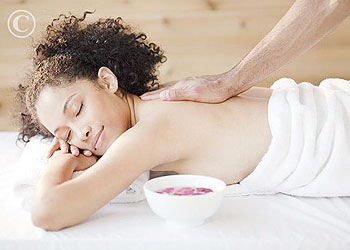With more and more people looking to spas for health, wellness, anti-aging and relaxation, spa-going has been described as a new cultural trend. But, in fact, spa-going (i.e., social bathing in “healing waters”) has been practiced for thousands of years - from the Mesopotamians, Egyptians and Minoans, to the Greeks and Romans (the word spa actually originates from the Latin verb spagere - to pour forth), and later, the Ottomans, Japanese and Western Europeans.


With more and more people looking to spas for health, wellness, anti-aging and relaxation, spa-going has been described as a new cultural trend. But, in fact, spa-going (i.e., social bathing in "healing waters”) has been practiced for thousands of years - from the Mesopotamians, Egyptians and Minoans, to the Greeks and Romans (the word spa actually originates from the Latin verb spagere - to pour forth), and later, the Ottomans, Japanese and Western Europeans.
Spa-Going around the World - from Japanese "Ryoken” to Turkish Hammam
Although the Roman combination of hot/cold baths, massage, exercise, skin treatments and relaxation was formative to the modern spa experience, distinct spa traditions grew out of different cultures worldwide. In 737 A.D., Japan’s first "onsen” (hot spring) opened near Izumo, and centuries later the first "ryoken” (inns) were built, offering fine food, accommodations, Zen gardens, outdoor baths and indoor soaking tubs called cypress ofuro. Saunas began appearing along the Baltic in Finland as early as 1000 A.D., inaugurating a rich Finnish spa-going tradition - including a prescription of sauna-induced sweating, icy lake plunges, and plenty of beer or vodka - that continues to this day in a nation that offers one sauna per every two Finns.
Europeans Go to the Source, Study the Science of Spas
In Western Europe, Charlemagne’s Aachen and Bonaventura’s Poretta developed as popular bathing/healing gathering places around thermal springs during the Middle Ages. In the Renaissance era, Paracelsus’ mountain mineral springs at Paeffers, Switzerland and towns like Spa, Belgium, Baden-Baden, Germany, and Bath, England grew around natural thermal waters considered to have healing properties. In 1522, the first scientific book (on the Czech Karlovy Vary treatment for disease) was published in which a regimen of hot spring baths and tonics was recommended. In the 1890s, Father Sebastian Kneipp developed holistic herbal and water therapy in the German spa village of Bad Worishofen. But the spa/health connection also had a downside. In 1350 public baths were closed across Europe to prevent the spread of bubonic plague. And later, in 1538, France destroyed its bathhouses in an effort to stem a syphilis epidemic.
Spa-Going Hits Mainstream, Goes Global
With the advent of these and other diverse spa offering, the spa - which by the mid-20th century had become the rarified domain of wealthy women looking to lose weight - reclaimed its relevance in a society increasingly focused on prevention, healthy lifestyles, fitness, spirituality and relaxation. With record numbers of people turning to the spa for some of their most important lifestyle pursuits, today’s spa experience covers medical and spiritual programs to outdoor adventures and exotic travel - with spas located in virtually every global region, including Africa, the Middle East, and the former Eastern Bloc. The spa aesthetic meanwhile, has broken out of the spa and into popular culture, influencing everything from fashion and cosmetics, to architecture, home décor, and cuisine.
Ends




